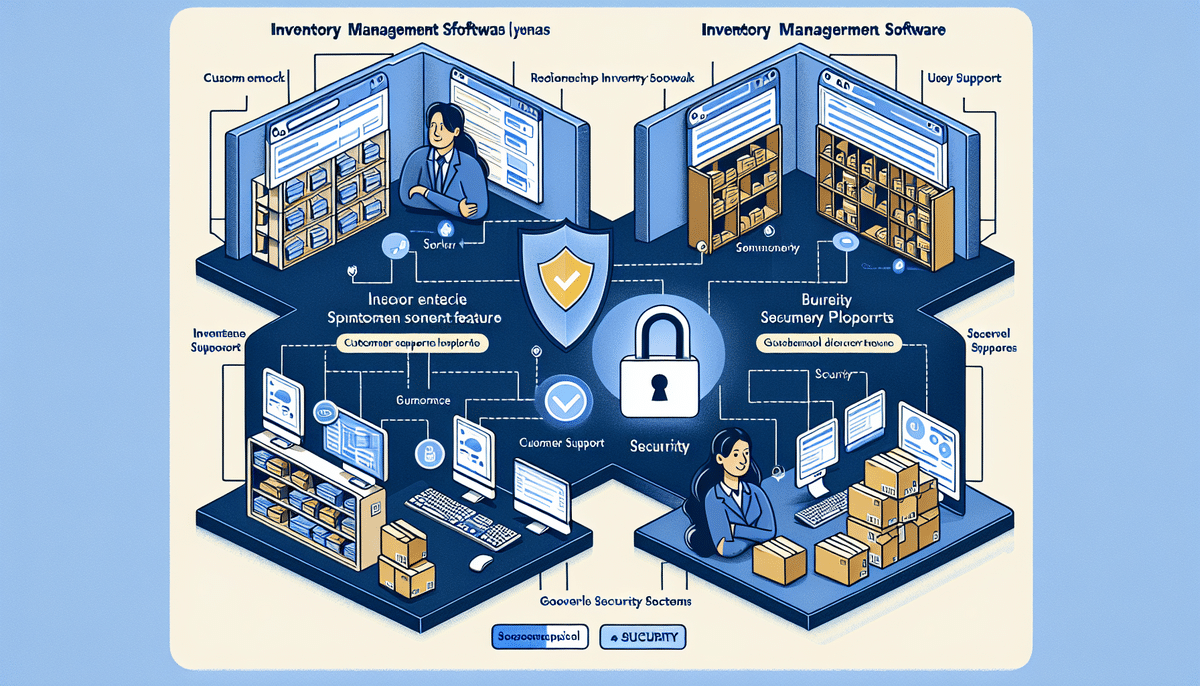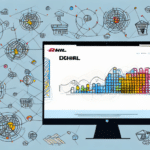Streamline Your Inventory Management: Integrating UPS with Fishbowl Inventory
Efficient inventory management is crucial for businesses aiming to optimize their operations and enhance customer satisfaction. Integrating UPS with Fishbowl Inventory offers a robust solution to streamline your shipping processes, automate tasks, and provide real-time tracking information. This comprehensive guide will walk you through the benefits, steps for integration, optimization tips, and solutions to common challenges, ensuring a successful UPS integration with Fishbowl Inventory.
Importance of UPS Integration in Inventory Management
Integrating UPS with Fishbowl Inventory is a strategic move that can significantly enhance your shipping and inventory management processes. This integration automates manual tasks, reduces errors, and ensures seamless communication between your inventory system and shipping operations.
Enhanced Efficiency and Accuracy
Automation reduces the need for manual data entry, minimizing the risk of errors and saving valuable time. By importing shipping rates and generating labels directly within Fishbowl, your team can focus on more strategic tasks, leading to increased productivity.
Real-Time Tracking and Customer Transparency
With real-time tracking, businesses can monitor the status of shipments, address issues proactively, and provide customers with accurate delivery updates. This transparency builds trust and improves overall customer satisfaction.
Key Benefits of Integrating UPS with Fishbowl Inventory
- Time Savings: Automate label generation, tracking, and notifications to save time and reduce manual workload.
- Cost Efficiency: Access discounted UPS shipping rates to lower your shipping expenses.
- Improved Accuracy: Reduce errors in shipping information and enhance order fulfillment accuracy.
- Scalability: Easily handle increased shipping volumes as your business grows.
According to a Statista report, businesses that automate their shipping processes can see up to a 30% increase in operational efficiency.
Step-by-Step Guide to Connecting UPS with Fishbowl Inventory
1. Access the Shipping Module in Fishbowl
Navigate to the Fishbowl Inventory menu and select the UPS driver under the Shipping module.
2. Enter Your UPS Account Information
Input your UPS account details to establish a connection between Fishbowl and UPS.
3. Configure Shipping Preferences
Set up your preferred service types, packaging options, and other shipping preferences to tailor the integration to your business needs.
4. Test the Connection
Ensure the integration is functioning correctly by running a test connection. Address any issues before proceeding.
5. Start Generating UPS Labels
Once the connection is verified, begin generating UPS shipping labels directly from Fishbowl Inventory, streamlining your order fulfillment process.
For detailed instructions, refer to the Fishbowl Support Center.
Optimizing Your UPS Integration with Fishbowl Inventory
Customize Shipping Preferences
Adjust your shipping settings to align with your business requirements, ensuring that the integration works seamlessly with your existing processes.
Set Default Packaging and Billing Information
Establish default settings for packaging, shipping, and billing to streamline operations and reduce the time spent on repetitive tasks.
Train Your Team
Ensure that your staff is well-versed in using the integration to maintain efficiency and accuracy in your shipping processes.
Regularly Update and Test Your Connection
Stay proactive in maintaining your integration by regularly testing the connection and updating any changes in UPS or Fishbowl systems.
Implementing these optimization strategies can lead to significant improvements in your shipping workflow and overall inventory management.
Managing UPS Shipping Within Fishbowl Inventory
Generating Shipping Labels
Create UPS shipping labels directly from Fishbowl, eliminating the need for separate systems and reducing the likelihood of errors.
Tracking Packages
Utilize real-time tracking features to monitor the status of your shipments, providing transparency to both your business and your customers.
Cost Management and Reporting
Analyze shipping costs and generate detailed reports to gain insights into your shipping activities, helping you make informed business decisions.
Effective management of UPS shipping within Fishbowl Inventory ensures a streamlined order fulfillment process and enhances customer satisfaction.
Addressing Common Challenges in UPS and Fishbowl Integration
Data Accuracy and Customer Information
Ensure that customer information is complete and accurate to prevent shipping errors. Regularly verify and update your customer database.
System Compatibility and Updates
Stay informed about updates to both Fishbowl and UPS systems to avoid compatibility issues. Regularly update your software to the latest versions.
Connectivity and Downtime Issues
Maintain a reliable internet connection and have contingency plans in place to handle potential downtime. Implementing backup protocols can mitigate disruptions.
Complex Integration Processes
For businesses with extensive inventories or unique requirements, consider consulting with professional integration service providers to ensure a smooth setup.
By proactively addressing these challenges, you can maintain a robust and efficient UPS integration with Fishbowl Inventory.
Future Trends in UPS and Fishbowl Inventory Integration
Automation and Artificial Intelligence
The integration of AI can further streamline shipping processes, predict shipping needs, and optimize inventory levels based on real-time data.
Enhanced Analytics and Reporting
Advanced analytics tools will provide deeper insights into shipping performance, helping businesses make more informed decisions and improve operational efficiency.
Integration with Other Logistics Platforms
Future integrations may allow for seamless connections with additional logistics and inventory management systems, offering greater flexibility and scalability.
Sustainability Initiatives
As businesses focus more on sustainability, integrations may include features that enable eco-friendly shipping options and better resource management.
Staying abreast of these trends will help businesses leverage the full potential of their UPS and Fishbowl Inventory integration.
Case Studies: Successful UPS and Fishbowl Integration
Gourmet Food Retailer
A gourmet food retailer integrated UPS with Fishbowl Inventory to streamline their shipping process, resulting in a 25% increase in order fulfillment speed and a significant boost in customer satisfaction.
Consumer Goods Manufacturer
A consumer goods manufacturer automated their shipping operations through UPS integration, reducing shipping errors by 40% and saving countless hours in manual processing.
Furniture Retailer
A furniture retailer leveraged the integration to generate detailed shipping reports, enhancing their inventory management and allowing for data-driven decision-making.
These case studies demonstrate the tangible benefits and positive impact of integrating UPS with Fishbowl Inventory.
Top Tools and Resources for Managing Your UPS-Fishbowl Integration
- Fishbowl Knowledge Base: Comprehensive resources and guides for using Fishbowl Inventory and its integration options.
- UPS Customer Support: Assistance with troubleshooting and optimizing your UPS account settings.
- Third-Party Consultants: Expert guidance on enhancing your shipping and inventory management processes.
Utilizing these tools and resources can help you maintain and optimize your UPS-Fishbowl integration, ensuring continuous improvement and operational excellence.
Conclusion
Integrating UPS with Fishbowl Inventory is a strategic approach to enhancing your inventory and shipping management processes. The benefits of increased efficiency, cost savings, and improved customer satisfaction make it a valuable investment for businesses of all sizes. By following the steps outlined in this guide and leveraging the available tools and resources, you can achieve a successful integration and stay ahead in a competitive market. Embrace the advancements in technology and continue to optimize your processes to fully realize the potential of your UPS and Fishbowl Inventory integration.




















